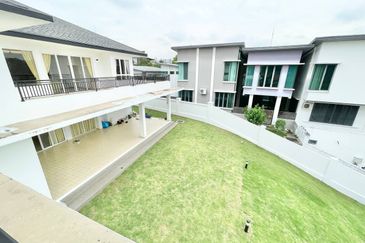
THE investment landscape for Asia-Pacific real estate has transformed significantly in the past decade. A mix of new entrants, the emergence of first-time cross-border investors, and the wider involvement of institutional investors have not only spiked capital volumes but also changed the dynamic of this market substantially. As investment intentions are moving further away from capital appreciation strategies, investors in Asia-Pacific real estate remain heavily focused on yield spreads when seeking assets.
The search for yield can be attributable to broader participation of institutional investors, including sovereign wealth funds, insurance companies and pension funds, which collectively invested US$22.5 billion (RM96.7 billion) in Asia-Pacific real estate between 2013 and 2016. With the relaxation of outbound investment regulations for insurance companies in China, Taiwan and South Korea, CBRE Research also anticipates sustainable interest in high-yielding, longer-term returns to match liabilities.
Regionally, the search for yield is directing investor interest towards Australian real estate assets this year. Sydney and Melbourne continue to be attractive destinations for those seeking investments with high-yield spreads. Factors such as solid fundamentals, robust liquidity and market transparency ensure that both cities will remain appealing investment destinations, but competition for limited assets will benefit cities such as Adelaide, Brisbane and Canberra, owing to their lower volatility and stabilising rental markets.
Japan also remains attractive to real estate investors because of its high commercial yield spread. Investment demand has been heavily concentrated in Tokyo, owing to strong rental growth and robust liquidity, but is likely to peak and correct as new supply enters the market in 2017/18. Given this backdrop, investors are diversifying towards Japan’s regional cities such as Osaka, Fukuoka and Yokohama, driven by factors such as yield premiums that are 150 basis points higher than those of Tokyo, and lower rental vacancies.
Japanese real estate is a well-established asset class for regional and global investors that delivers consistent yield and performs as an internationally stable investment. The combination of continued competition to invest in Tokyo real estate and positive fundamentals in regional markets is leading more investors to look closely at cities in the region.
Investors focusing on the mature Australia and Japan markets must manage the search for yield with a strong risk management framework. With more attention directed towards yield spreads versus capital appreciation in investments in both countries, CBRE has identified three areas of risk facing investors in the medium term:
Liquidity risk
Investors chasing yield in Australia and Japan are more exposed to liquidity risk, especially during periods of market downturn. To mitigate that, CBRE Research sees investors turning to funds that have more flexible investment horizons or alternative exit strategies, including converting close-ended funds to open-ended ones to avoid being forced to exit assets during low liquidity and high price volatility.
Currency risk
Freely traded currencies such as the Australian dollar and the yen are both subject to volatility and require investors to operate active hedging programmes to manage the associated currency risk of investing in both markets. However, hedging movements in the Australian dollar and Japanese yen are generally well understood by investors, supported by a sophisticated market of liquid instruments.
Business party risk
Investors entering into mature real estate markets such as Australia and Japan, and emerging destinations such as Vietnam, often opt, or are required, to enter through a joint-venture (JV) partnership. To align investment interests and views, CBRE Research observes investors scrutinising track records of potential partners more heavily and performing more thorough due diligence to assess investment and strategic objectives.
Irrespective of location or asset class, investors who chase an elevated yield premium understand that heightened risks are par for the course. However, the diversity of risk mitigation tactics now being used by investors in markets such as Australia and Japan shows that many expect to play the yield strategy across real-estate portfolios for the foreseeable future.
Outside of those two countries, markets such as Vietnam continue to hold stronger appeal to investors with greater tolerance for development risk. While both yield spreads and economic fundamentals continue to reinforce appetite for real estate investment, the investible stock is limited. This suggests that interest in Vietnam is being driven more by longer-term potential than shorter-term returns.
Additional themes with the Asia-Pacific real estate investment space include:
Diversity of entry points
Investors now have more potential entry points available to facilitate real estate investment. Direct investments, portfolios, JVs and indirect investments through real estate funds remain popular. With greater institutional investor participation in the market, CBRE Research also sees more portfolio deals capable of capturing larger exposures.
JV openness
More investors are focusing on establishing and deepening relationships with local developers through JVs, owing to the limited availability of assets in certain markets. Co-investments with other investors also continue to evolve in Asia-Pacific as an alternative avenue to capture outsized exposure to an individual asset or portfolio of assets.
Benefiting from portfolio rebalancing
Institutional investors continue to diversify portfolios and pivot towards Asia-Pacific real estate assets to offset low government bond yields and interest rates. The inclusion of direct real estate investment continues to attract institutional investors searching for stable, riskadjusted returns.
Robert Fong is director of research, CBRE Asia Pacific. This article includes excerpts from CBRE Research’s ‘New channels for old favourites’ report.
This article first appeared in The Edge Property Singapore, a pullout of The Edge Singapore, on July 3, 2017.
For more stories, download TheEdgeProperty.com pullout here for free.
TOP PICKS BY EDGEPROP

Puteri Palma Condominium @ IOI Resort City
Putrajaya, Selangor

Country Heights Kajang
Country Heights, Selangor

Tranquility Park @ East Ledang
East Ledang, Johor






















